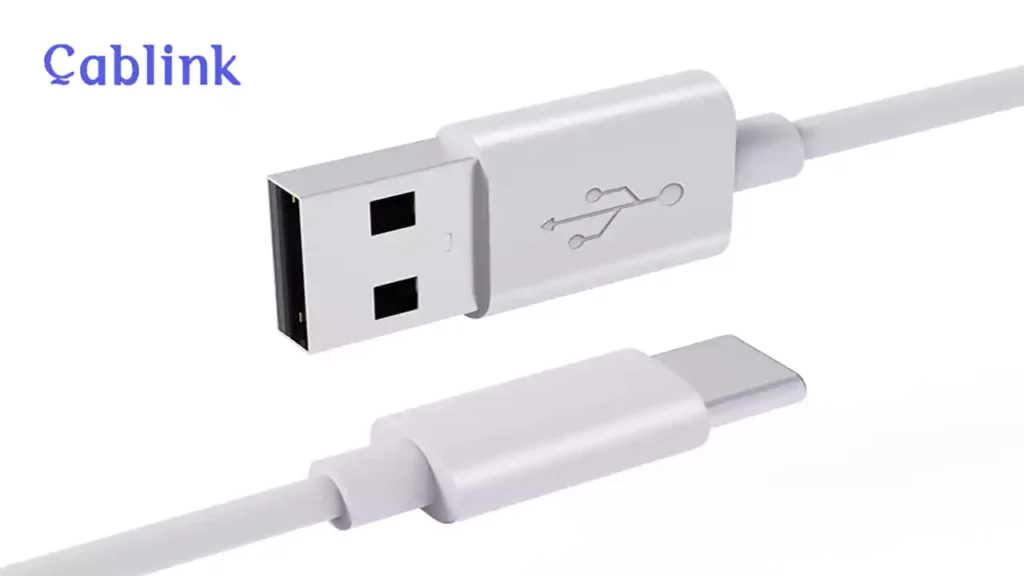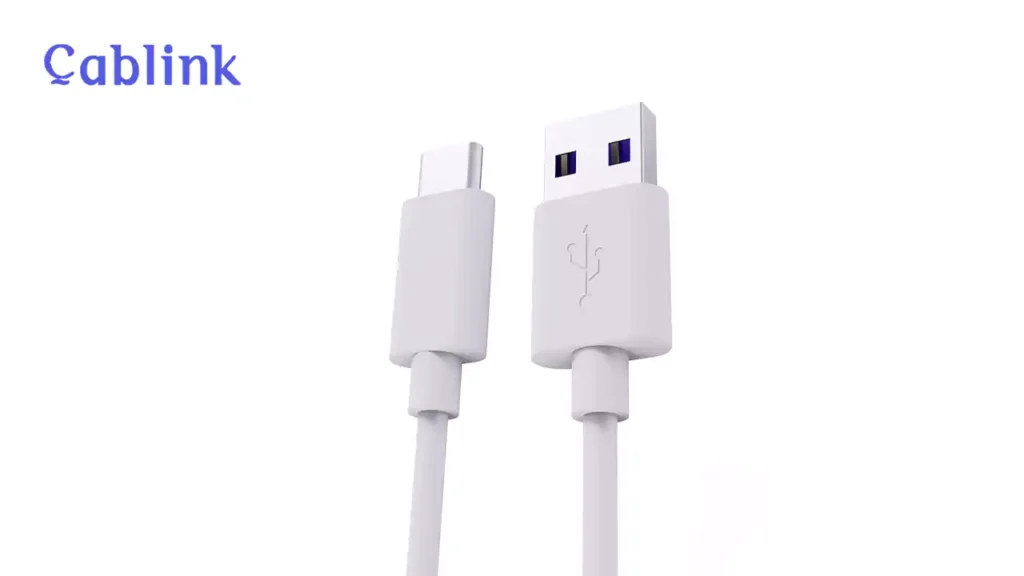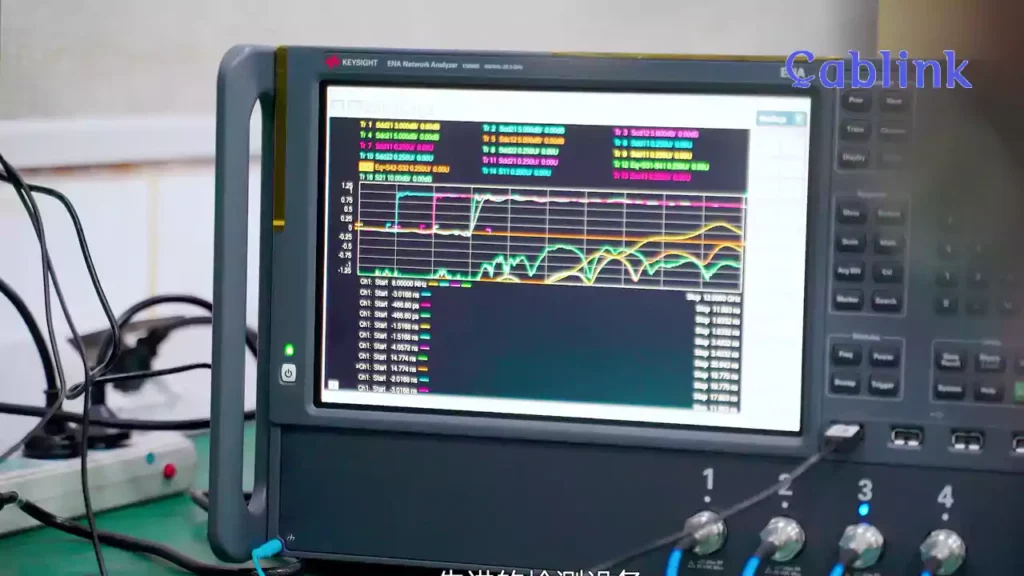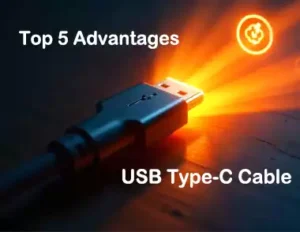
Table of Contents
In the ever – evolving world of technology, speed and performance are at the heart of innovation. With the introduction of USB 4.0 Gen2, which pushes speeds to 80Gbps, we’ve seen an incredible leap forward in data transfer and connectivity. However, the future holds even greater possibilities with the arrival of USB 5.0, which promises to deliver speeds of 120Gbps to 160Gbps – a game-changing jump that will revolutionize industries, applications, and the way we interact with technology. In this comprehensive post, we’ll explore everything you need to know about USB 5.0 cables, from how they work and their key features to the reasons why they are crucial for the future of data transfer.
What is USB 5.0 cable?

USB (Universal Serial Bus) technology has long been the backbone of device connectivity, powering everything from external drives to smartphones. The introduction of USB 5.0 cable represents the latest leap forward in this ongoing evolution. USB 5.0 cable is poised to redefine the way we think about data transfer speeds, enabling ultra-fast file transfers, seamless video streaming, and efficient power delivery for high-performance devices.
USB 5.0 cable will significantly increase the maximum data transfer rate, offering speeds up to 160Gbps, which is almost double the speed of USB 4.0 Gen2 cable (80Gbps). These speeds will not only benefit professionals working with large-scale data but also enhance consumer devices like high-end gaming consoles, media centers, and virtual reality (VR) headsets.
This upgraded specification allows USB 5.0 cables to handle bandwidth-heavy tasks such as 8K video streaming, large file transfers, and extensive data backups. By offering backward compatibility with previous USB standards, USB 5.0 cables will seamlessly integrate into existing setups, making the transition to this new standard easier for both consumers and businesses.
USB 4.0 Gen2 vs. USB 5.0 Cable: Speed and Performance Breakdown
Before we dive into the specifics of USB 5.0, it’s essential to understand how it stacks up against its predecessor, USB 4.0 Gen2, which boasts speeds of 80Gbps.
USB 4.0 Gen2 Cable (80Gbps)
USB 4.0 Gen2 was introduced as part of the USB 4.0 standard and brought impressive advancements in data transfer. With speeds up to 80Gbps, it opened the door for data-intensive tasks, such as connecting external SSDs, using high-performance graphics cards, and powering ultra-high-definition video displays.
While USB 4.0 Gen2 dramatically improved performance over previous USB versions, USB 5.0 is the next evolution. The ability to transfer data at 80Gbps was certainly groundbreaking, but it only scratches the surface of what’s possible as technology continues to evolve.
USB 5.0 Cable (120Gbps–160Gbps, Forecast)
USB 5.0 promises to break new ground with 120Gbps to 160Gbps speeds, allowing for much faster file transfers, ultra-low-latency gaming, and smooth 8K video editing or streaming. The significant performance boost of USB 5.0 will be critical for industries that rely on large data sets, such as media production, high-performance computing, virtual reality, and gaming.
USB 5.0’s ability to handle multiple high-bandwidth tasks simultaneously will make it a must-have standard for professionals and enthusiasts alike. This leap in speed will also help eliminate performance bottlenecks, reduce latency, and support new devices and applications that demand more power.
In short, USB 5.0 is not just an incremental upgrade—it’s a technological leap that will pave the way for a new era of connectivity.
Key Features and Benefits of USB 5.0 Cable

1. Super-fast Data Transfer
One of the most significant benefits of USB 5.0 is the ability to transfer data at up to 160Gbps, making file transfers almost instantaneous. Whether you’re working with 8K video or transferring huge game files, USB 5.0 provides the speed and performance needed to keep up with the increasing demand for high-bandwidth content.
For professionals in the media and entertainment industries, the speed and efficiency of USB 5.0 cables will streamline workflows, allowing them to handle large files with ease. Whether it’s moving a 4K movie from a hard drive to a laptop or streaming high-definition video, USB 5.0 ensures lightning-fast data transfer without interruption.
2. Enhanced Power Delivery
USB 5.0 cable also introduces faster power delivery. With increased power output, USB 5.0 can support the charging of power-hungry devices such as high-end laptops, gaming consoles, and external hard drives. This is especially valuable for professionals who need to charge devices quickly while maintaining a high-speed data transfer rate.
Faster power delivery is also beneficial for smartphones and tablets, ensuring that these devices can be charged more efficiently while transferring data simultaneously.
3. Improved Signal Integrity
As data transfer speeds increase, the challenge of maintaining signal integrity becomes more pronounced. USB 5.0 cables come equipped with advanced error correction and signal encoding techniques to ensure stable data transmission, even over longer cable lengths. This means fewer data loss issues, reduced lag, and more reliable performance in demanding situations.
4. Backward Compatibility
One of the most significant advantages of USB 5.0 cable is its backward compatibility with earlier USB versions. USB 5.0 will work with devices that use USB 3.0, USB 4.0 Gen2, and even USB 2.0, although the data transfer speed will be limited to the capabilities of those older standards. This backward compatibility ensures a smooth transition as consumers and businesses adopt the new standard.
This compatibility also means that users who upgrade to USB 5.0 will still be able to use their older USB devices without any issues, making it easier to integrate the new standard into existing tech ecosystems.
Why USB 5.0 is Critical for the Future of Technology

The future of technology is moving toward high-bandwidth applications, and USB 5.0 will be the key to unlocking new capabilities in a wide range of industries. As technologies such as 8K video, virtual reality, autonomous vehicles, and artificial intelligence (AI) become more mainstream, the need for faster and more reliable data transfer will continue to grow.
8K Video Streaming and Editing
As 8K resolution content becomes more widely available, USB 5.0 will play a crucial role in enabling the seamless streaming and editing of this ultra-high-definition content. With 160Gbps speeds, users will be able to transfer massive video files with ease, drastically reducing rendering times for professionals in the film and media industries.
Gaming
USB 5.0 will also be indispensable in the world of gaming. With an increasing demand for real-time gaming and VR experiences, ultra-fast data transfer speeds will be necessary to keep latency low and performance high. Gaming peripherals, external hard drives, and other devices will benefit from the speed and power of USB 5.0.
Virtual Reality (VR)
VR headsets, which rely heavily on high-bandwidth data, will require the next-generation speeds that USB 5.0 offers. USB 5.0 cables will help deliver lag-free, immersive VR experiences, enabling higher frame rates and smoother interactions for both consumers and developers.
In conclusion, USB 5.0 is essential for ensuring that the technology we rely on today can keep up with the demands of tomorrow’s innovations.
USB 5.0 vs. USB 4.0 Gen2 Cable: How Much Faster Is It?
To put things in perspective, let’s examine the difference in data transfer speeds between USB 4.0 Gen2 and USB 5.0.
- USB 4.0 Gen2 offers 80Gbps transfer speeds, which is perfect for high-speed data tasks like gaming, 4K video editing, and connecting external SSDs.
- USB 5.0, on the other hand, will offer 120Gbps to 160Gbps, which is over twice the speed of USB 4.0 Gen2. This will allow users to stream 8K video, transfer massive data sets, and engage in VR with significantly reduced latency.
In short, USB 5.0’s faster speeds will provide a competitive advantage for professionals and enthusiasts alike, enabling more efficient workflows and experiences.
USB Evolution: Comparing USB Versions 1.0 to USB 5.0 (Forecast)
Here the different version of USB cable comparing as follow:
- USB 1.0: Launched in 1996 with speeds of 12Mbps, primarily for peripheral devices like mice and keyboards.
- USB 2.0: Introduced in 2000 with speeds of 480Mbps, it became the standard for most devices.
- USB 3.0: Launched in 2008 with speeds of 5Gbps, allowing for faster data transfer and greater power delivery.
- USB 3.1: Released in 2013, with speeds of 10Gbps, introduced Type-C connectors and enhanced power delivery.
- USB 3.2: Released in 2017, speeds increased to 20Gbps.
- USB 4.0 Gen2: Released in 2020, offering speeds up to 40Gbps, followed by USB 4.0 Gen2 pushing speeds up to 80Gbps.
- USB 5.0: Expected to reach 120Gbps to 160Gbps, setting the stage for ultra-high-speed applications in the coming years.
- Include a chart comparison of the USB versions, showcasing their speeds, release years, and key features:
USB Cable Comparing(From 1.0 to 5.0)
USB Version | Release Year | Max Speed | Key Features |
USB 1.0 | 1996 | 12 Mbps | Basic data transfer for peripherals |
USB 2.0 | 2000 | 480 Mbps | Widely adopted, fast data transfer |
USB 3.0 | 2008 | 5 Gbps | Higher speed, improved power delivery |
USB 3.1 | 2013 | 10 Gbps | Type-C connector, improved power |
USB 3.2 | 2017 | 20 Gbps | Enhanced data transfer, faster speeds |
USB 4.0 | 2019 | 40 Gbps | Supports Thunderbolt, high-speed data |
USB 4.0 Gen2 | 2022 | 80 Gbps | Latest USB standard, faster data rates |
USB 5.0 | Forecast | 120–160 Gbps | Ultra-fast transfer for heavy workloads |
Will USB 5.0 Cable Be Backward Compatible?
Yes, USB 5.0 will be backward compatible with USB 4.0 Gen2, USB 3.2, and USB 2.0 standards. However, when using older devices, the data transfer speed will be limited to the maximum speed supported by the older cable or device. For example, if you connect a USB 3.0 device with a USB 5.0 cable, the transfer speed will be limited to 5Gbps.
The backward compatibility of USB 5.0 ensures that upgrading to the latest standard will not render older devices obsolete, making it easier for users to adopt the new technology without the need for an entire hardware overhaul.
How to Choose the Right USB 5.0 Cable
When selecting a USB 5.0 cable, there are a few key factors to keep in mind:
- Cable Length: Longer cables can sometimes experience a decrease in speed, so select the appropriate length based on your setup.
- Cable Material: Opt for cables made with high-quality materials, such as braided nylon or premium copper, to ensure durability and optimal performance.
- Connector Type: Ensure the cable has the appropriate connector (e.g., USB-C or USB-A) for your device.
- Certification: Always choose certified USB 5.0 cables to guarantee you’re getting maximum speed and power. Brands like Cablink offer USB 5.0 certified cables that meet the highest standards of performance.
How to Choose A Reliable USB Cable Supplier

When choosing a USB cable supplier, it’s crucial to consider several factors to ensure you’re getting high-quality, durable, and reliable products. Here are key factors to evaluate:
- Quality Assurance & Certification: Make sure the supplier provides certified cables that meet USB-IF standards, ensuring high performance and safety. For instance, Cablink is known for offering USB cables that are thoroughly tested and certified, guaranteeing compliance with the latest specifications.
- Reputation and Customer Reviews: A reliable supplier should have a proven track record of customer satisfaction. Research customer reviews and feedback to assess their credibility. Cablink, for example, has earned strong customer loyalty through consistent quality and after-sales service.
- Product Variety and Customization: A good supplier should offer a wide range of USB cables that cater to various needs—such as USB 3.0, USB 4.0 Gen2, and USB 5.0 cables. Additionally, they should offer customization options to fit specific requirements, from cable length to connector types.
- Warranty and Support: Choose a supplier that offers a warranty on their products. Cablink offers a robust warranty policy on all its cables, along with responsive customer support to resolve any issues that may arise.
- Price vs. Quality: While price is important, it shouldn’t come at the cost of quality. Opt for a supplier like Cablink, which balances competitive pricing with premium quality, ensuring you get good value for your investment.
- Lead Time and Delivery: Ensure that the supplier can meet your deadlines and has a reliable delivery system. Fast lead times are crucial for businesses that require large quantities of cables. Cablink excels in delivering on time, even for bulk orders.
Market Trends: USB 5.0’s Role in the Tech Landscape
As USB 5.0 gains traction, it is expected to dominate the tech landscape. Industries such as gaming, media production, and data storage will be the first to benefit from the higher data transfer speeds. This evolution in USB technology will also drive innovation in the consumer electronics market, where fast, reliable data transfer is essential.
Conclusion
USB 5.0 is not just the next iteration of USB technology—it’s a revolutionary leap that will redefine the way we connect and interact with devices. With speeds of 120Gbps to 160Gbps, USB 5.0 will empower industries, professionals, and consumers to do more than ever before. Whether it’s for gaming, media production, or real-time applications, USB 5.0 offers the performance necessary for today’s most demanding tasks.
As we move toward this next generation of USB connectivity, now is the time to prepare by upgrading your devices, choosing certified USB 5.0 cables, and future-proofing your tech setups. The future of high-speed data transfer is here—don’t get left behind.



